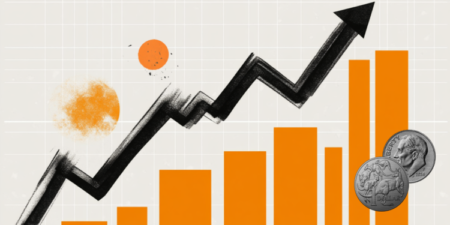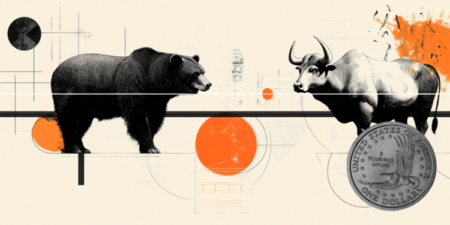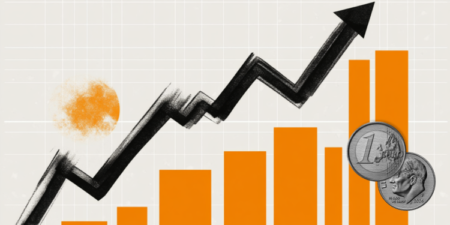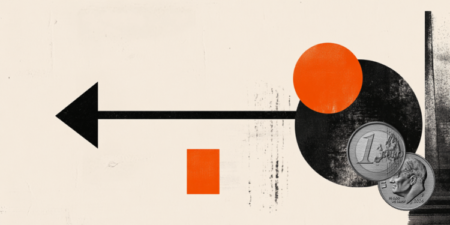- USD/CHF edges higher as SNB Schlegel’s ultra-dovish monetary policy guidance weighs on the Swiss Franc.
- SNB Schlegel opens doors for negative interest rates if inflation continues to remain lower.
- Investors seek more clarification on Trump’s tariff agenda.
The USD/CHF pair ticks higher to near 0.9060 in Wednesday’s North American session. The Swiss Franc pair recovers its intraday losses and gains marginally as Swiss National Bank (SNB) Chairman Martin Schlegel has opened doors for negative interest rates.
Schlegel said in an interview with Bloomberg TV at the World Economic Forum (WEF) in Davos that the SNB “doesn’t like negative interest rates” but if we have to do it, “we will”. His ultra-dovish monetary policy stance was backed by upside risks to inflation undershooting the SNB’s target range. Schlegel added, “We are ready to make currency market interventions if necessary again.”
Swiss Franc PRICE Today
The table below shows the percentage change of Swiss Franc (CHF) against listed major currencies today. Swiss Franc was the strongest against the Japanese Yen.
| USD | EUR | GBP | JPY | CAD | AUD | NZD | CHF | |
|---|---|---|---|---|---|---|---|---|
| USD | -0.09% | -0.04% | 0.23% | 0.17% | -0.21% | -0.05% | 0.02% | |
| EUR | 0.09% | 0.04% | 0.34% | 0.24% | -0.13% | 0.04% | 0.10% | |
| GBP | 0.04% | -0.04% | 0.29% | 0.21% | -0.17% | -0.00% | 0.05% | |
| JPY | -0.23% | -0.34% | -0.29% | -0.07% | -0.45% | -0.30% | -0.24% | |
| CAD | -0.17% | -0.24% | -0.21% | 0.07% | -0.38% | -0.21% | -0.17% | |
| AUD | 0.21% | 0.13% | 0.17% | 0.45% | 0.38% | 0.17% | 0.22% | |
| NZD | 0.05% | -0.04% | 0.00% | 0.30% | 0.21% | -0.17% | 0.05% | |
| CHF | -0.02% | -0.10% | -0.05% | 0.24% | 0.17% | -0.22% | -0.05% |
The heat map shows percentage changes of major currencies against each other. The base currency is picked from the left column, while the quote currency is picked from the top row. For example, if you pick the Swiss Franc from the left column and move along the horizontal line to the US Dollar, the percentage change displayed in the box will represent CHF (base)/USD (quote).
Meanwhile, the US Dollar (USD) performs better against the Swiss Franc (CHF) but trades cautiously, with investors seeking explicit tariff plans by United States (US) President Donald Trump.
The US Dollar Index (DXY), which tracks the Greenback’s value against six major currencies, rebounds after posting a fresh two-week low of 107.75 on Wednesday.
Investors look for more clarity on Trump’s tariff plans as he has not clarified in his two days of administration. On the contrary, market participants had anticipated that Trump will impose tariff hikes right after returning the White House.
Trump said that he is thinking to implement 25% tariffs on Mexico and Canada, and 10% on China, which will come into effect on February 1. Market participants see this as more balanced approach, which is less fearful than what they had though after Trump’s comments in the election campaign.
Swiss Franc FAQs
The Swiss Franc (CHF) is Switzerland’s official currency. It is among the top ten most traded currencies globally, reaching volumes that well exceed the size of the Swiss economy. Its value is determined by the broad market sentiment, the country’s economic health or action taken by the Swiss National Bank (SNB), among other factors. Between 2011 and 2015, the Swiss Franc was pegged to the Euro (EUR). The peg was abruptly removed, resulting in a more than 20% increase in the Franc’s value, causing a turmoil in markets. Even though the peg isn’t in force anymore, CHF fortunes tend to be highly correlated with the Euro ones due to the high dependency of the Swiss economy on the neighboring Eurozone.
The Swiss Franc (CHF) is considered a safe-haven asset, or a currency that investors tend to buy in times of market stress. This is due to the perceived status of Switzerland in the world: a stable economy, a strong export sector, big central bank reserves or a longstanding political stance towards neutrality in global conflicts make the country’s currency a good choice for investors fleeing from risks. Turbulent times are likely to strengthen CHF value against other currencies that are seen as more risky to invest in.
The Swiss National Bank (SNB) meets four times a year – once every quarter, less than other major central banks – to decide on monetary policy. The bank aims for an annual inflation rate of less than 2%. When inflation is above target or forecasted to be above target in the foreseeable future, the bank will attempt to tame price growth by raising its policy rate. Higher interest rates are generally positive for the Swiss Franc (CHF) as they lead to higher yields, making the country a more attractive place for investors. On the contrary, lower interest rates tend to weaken CHF.
Macroeconomic data releases in Switzerland are key to assessing the state of the economy and can impact the Swiss Franc’s (CHF) valuation. The Swiss economy is broadly stable, but any sudden change in economic growth, inflation, current account or the central bank’s currency reserves have the potential to trigger moves in CHF. Generally, high economic growth, low unemployment and high confidence are good for CHF. Conversely, if economic data points to weakening momentum, CHF is likely to depreciate.
As a small and open economy, Switzerland is heavily dependent on the health of the neighboring Eurozone economies. The broader European Union is Switzerland’s main economic partner and a key political ally, so macroeconomic and monetary policy stability in the Eurozone is essential for Switzerland and, thus, for the Swiss Franc (CHF). With such dependency, some models suggest that the correlation between the fortunes of the Euro (EUR) and the CHF is more than 90%, or close to perfect.
Read the full article here
















